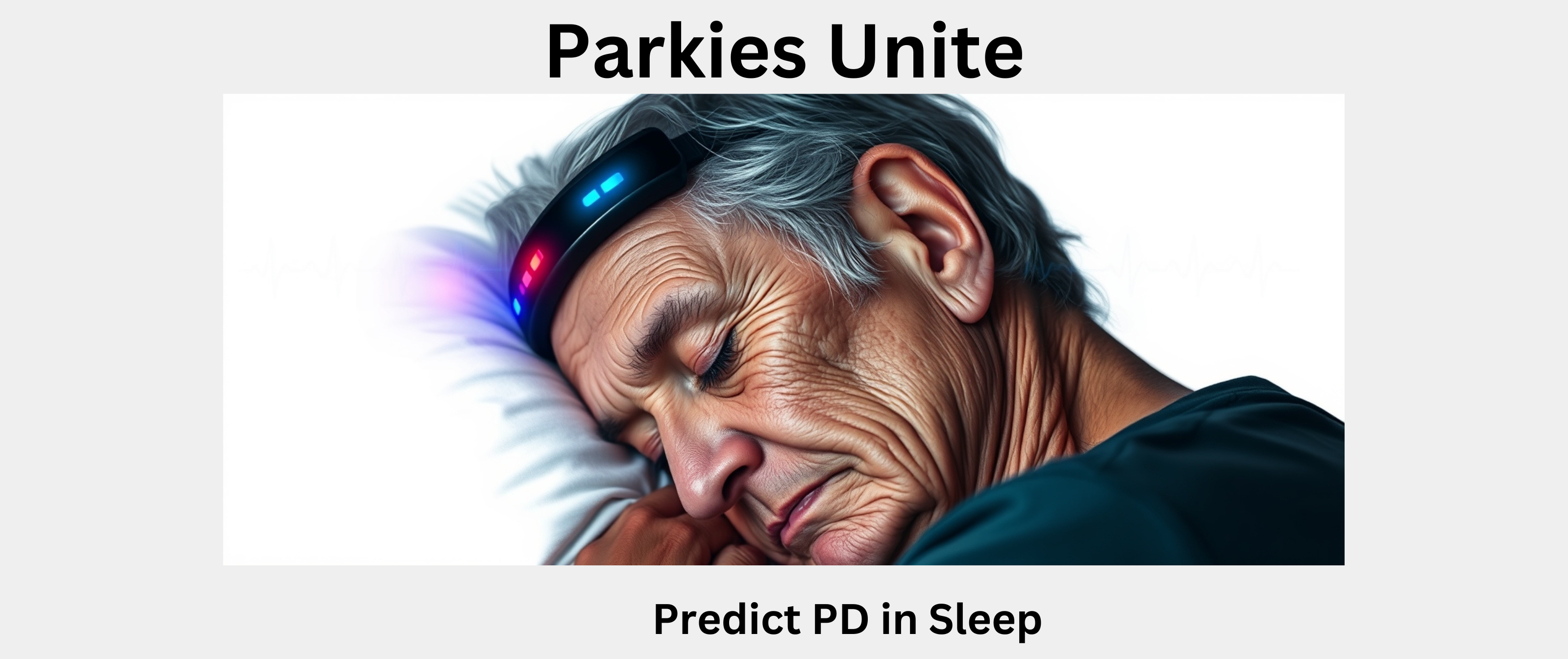AI Predicts Parkinson’s Through Sleep

(5 minutes read time)
How Researchers Use AI in Sleep Analysis
Understanding Parkinson’s disease (PD) involves recognizing more than just motor symptoms such as tremors, rigidity, and bradykinesia. Today, scientists emphasize non-motor symptoms, notably sleep disturbances, as key early indicators, or biomarkers, of Parkinson’s.
At Boston’s Mass General and Brigham Hospital, researchers are harnessing artificial intelligence (AI) to analyze patients’ sleep patterns using electroencephalography (EEG), a non-invasive technique that measures electrical activity in the brain. EEG helps detect irregular brain wave patterns, providing valuable insights into neurological health. These researchers discovered that AI could accurately forecast future cognitive impairments, including dementia and Parkinson’s-related cognitive decline, by identifying significant but previously undetectable brain wave alterations.
Their research found that AI-driven EEG analysis could predict dementia, including Parkinson’s-related dementia, with 77% accuracy, detecting subtle brain wave changes in 85% of patients who eventually developed dementia.
Parkinson’s Sleep Disorders as Early Biomarkers
One critical sleep-related indicator is REM Sleep Behavior Disorder (RBD): Unlike common sleep disorders such as insomnia or sleep apnea, RBD is characterized by the loss of normal muscle paralysis during REM sleep, causing individuals to physically act out their dreams, sometimes violently. This distinguishes it from other sleep disturbances and makes it a particularly strong predictor of neurodegenerative diseases like Parkinson’s. Remarkably, around 80% of individuals diagnosed with idiopathic RBD develop neurodegenerative diseases such as Parkinson’s within 10-15 years.
Moreover, Parkinson’s affects overall sleep architecture. Specific EEG findings include:
- Reduced slow-wave sleep (deep sleep), which is essential for brain restoration.
- Altered spindle activity, critical for cognitive function and memory consolidation.
- Circadian rhythm disruptions, leading to fragmented sleep, insomnia, and excessive daytime sleepiness.
AI’s Role in Identifying Early Biomarkers
AI can detect these subtle EEG patterns earlier and more accurately than human analysts, highlighting abnormalities such as:
- Changes in alpha, beta, and theta wave frequencies, indicating potential neurodegeneration.
- Reduced coherence and synchrony across brain regions, suggesting early disruptions in neural connectivity.
- Micro-level disruptions in brain wave activity that signal emerging neurodegeneration.
Early Neuroprotective Interventions for Parkinson’s
Identifying sleep biomarkers allows clinicians to implement proactive, potentially neuroprotective measures sooner, which include:
Lifestyle Interventions
- Exercise: Engaging in aerobic workouts, strength training, yoga, or Tai Chi to promote neuroplasticity and support dopamine production.
- Dietary Changes: Following anti-inflammatory diets such as the Mediterranean diet or MIND diet to combat oxidative stress and neuroinflammation.
- Sleep Hygiene: Maintaining a structured sleep schedule, optimizing sleep environments, and addressing insomnia through cognitive behavioral therapy for insomnia (CBT-I).
Pharmacological Treatments
- GLP-1 Receptor Agonists: Drugs such as lixisenatide, exenatide, semaglutide, and DA5-CH have shown neuroprotective effects by reducing inflammation and α-synuclein aggregation.
- MAO-B Inhibitors: Rasagiline may offer neuroprotection by preserving dopamine neurons and reducing oxidative stress.
Supplements and Complementary Approaches
- Coenzyme Q10 (CoQ10): Provides antioxidant protection for mitochondria, potentially slowing neurodegeneration and supporting cellular energy production.
- Vitamin D and Omega-3 Fatty Acids: Anti-inflammatory agents that support cognitive function and reduce neuroinflammation.
- Mucuna pruriens: A natural source of levodopa, which may offer early symptomatic relief and neuroprotection.
Cognitive and Behavioral Therapies
- Cognitive Training: Engaging in brain exercises to strengthen memory, executive function, and problem-solving skills.
- Mindfulness-Based Stress Reduction (MBSR): Reducing stress-related neurological damage through guided mindfulness practices.
- Cognitive Behavioral Therapy (CBT): Addressing emotional and psychological health to prevent anxiety and depression from exacerbating neurodegeneration.
Novel and Experimental Treatments
- Prasinezumab: An anti-α-synuclein antibody targeting toxic protein aggregation in the brain.
- Stem Cell Therapy: A promising but experimental approach aimed at regenerating dopamine-producing neurons.
- Deep Brain Stimulation (DBS) and Neuromodulation: Typically used in advanced PD, but research is exploring its potential benefits when applied at earlier disease stages. Preliminary studies suggest that early DBS intervention may help preserve motor function, reduce medication dependency, and slow disease progression, though further research is needed to confirm these benefits.
Digital Biomarkers and Remote Monitoring
- Wearable Tech: Continuous assessment of movement, sleep, and neurophysiological markers through smartwatches and sensor-based monitoring.
- Home EEG Monitoring: Tracking sleep and neurological changes remotely, enabling real-time detection of Parkinson’s progression.
The Future: Early Diagnosis and Treatment
By harnessing AI to analyze sleep disturbances, healthcare providers can intervene earlier, potentially slowing or altering Parkinson’s disease progression. Ongoing research is exploring how AI-driven diagnostics can be integrated into clinical practice, with future studies focusing on refining predictive accuracy and expanding datasets to include diverse populations. As technology advances, these innovations hold promise for revolutionizing early detection and treatment strategies in neurodegenerative diseases. These advancements offer hope for improved patient outcomes and enhanced quality of life.
AI-generated medical infographics on Parkinson’s symptoms, treatment advances, and research findings; I hope you found this blog post informative and interesting. www.parkiesunite.com by Parkie
SEO Keywords: AI EEG Parkinson’s Prediction, REM Sleep Behavior Disorder, GLP-1 Parkinson’s Treatment, Parkinson’s Sleep Disorders, Early Parkinson’s Biomarkers
DALL-E Image Prompt: “Photorealistic depiction of a serene nighttime scene showing an elderly individual sleeping peacefully, wearing an EEG headband with subtle LED lights, capturing brain waves. Background subtly shows graphical brainwave patterns on a transparent overlay, representing AI analysis predicting Parkinson’s. Scene softly lit, warm tones, realistic textures.”
Taglines:
- AI Sees Parkinson’s First
- Predict PD in Sleep
- EEG Unlocks Parkinson’s
Negative Prompt: Malformed limbs, extra limbs, mutated hands, disfigured face, bad anatomy, malformed hands, Text, lettering, captions, generating images with text overlays